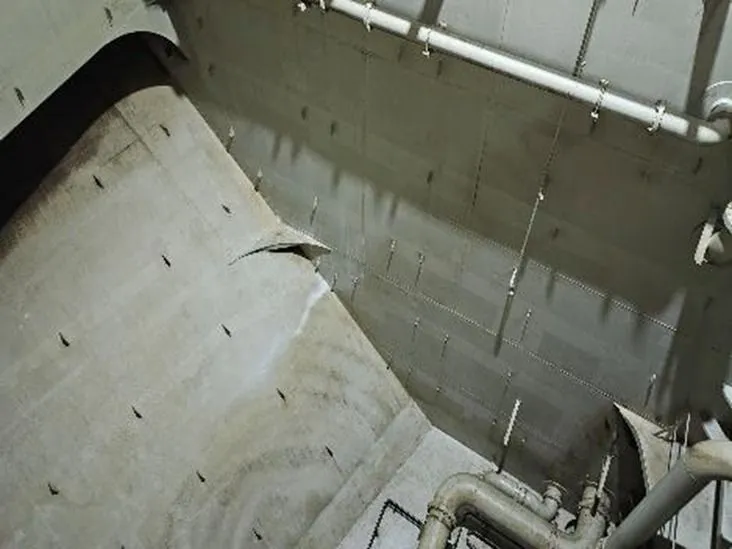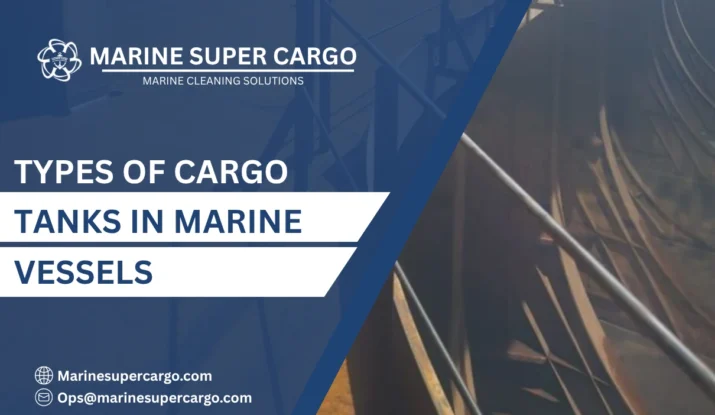Understanding Different Cargo Tank on Marine Vessels
Cargo tanks represent the primary storage compartments aboard marine vessels designed to transport liquid products safely across oceans. Each type of cargo tank serves specific purposes, from crude oil transportation to chemical handling, requiring distinct cleaning protocols and maintenance procedures.
The design of cargo tanks varies significantly based on vessel type, cargo characteristics, and operational requirements. Understanding these differences helps vessel operators implement appropriate cleaning strategies that comply with MARPOL and IMO regulations.
At Marine Super Cargo, we specialize in managing diverse cargo tanks cleaning requirements across all vessel types. Our expertise ensures cargo tank maintain optimal condition while meeting international maritime standards.
Types of Cargo Tanks Based on Construction
Integral Cargo Tank
Integral cargo tank form part of the vessel’s hull structure. These cargo tanks share boundaries with the ship’s shell plating, extending from port to starboard sides. Found primarily on crude oil tankers, integral cargo tank require robust construction to withstand sea pressure and cargo weight. Cleaning these cargo tank demands careful attention to structural components, longitudinal bulkheads, and transverse frames.
Independent Cargo Tank
Independent cargo tanks are self-supporting structures installed within the vessel’s hull but separated from the shell plating. These cargo tank, common on LPG and chemical carriers, provide additional safety through double containment. The space between independent cargo tank and hull allows inspection access and provides secondary protection. Cleaning independent cargo tank requires specialized procedures addressing both inner surfaces and surrounding areas.
Membrane Cargo Tank
Membrane cargo tanks feature thin, flexible barriers supported by the ship’s insulation system. These cargo tank typically used for LNG carriers, maximize cargo capacity while minimizing weight. The membrane design creates unique cleaning challenges requiring gentle techniques that preserve the delicate lining integrity.

Cargo Tank Classification by Product Type
Crude Oil Cargo Tank
Crude oil cargo tanks handle unrefined petroleum products from loading terminals to refineries. These cargo tank accumulate heavy sludge, sediments, and wax deposits requiring intensive cleaning. Marine Super Cargo employs crude oil washing (COW) systems aboard these cargo tank, utilizing cargo itself as cleaning medium per IMO regulations.
Tank cleaning for crude oil cargo tanks involves heating washing medium to 60-80°C, ensuring effective sludge removal from bottom plating to overhead structures. All operations follow MARPOL Annex I requirements for oil pollution prevention.
Product Cargo Tanks
Product cargo tanks transport refined petroleum like gasoline, diesel, and jet fuel. These cargo tanks require higher cleanliness standards than crude carriers since product contamination directly affects quality and value. Cleaning product cargo tank between different grades prevents cross-contamination that could render cargoes off-specification.
The cleaning process for product cargo tank emphasizes residue-free results. Every surface from bow to stern must achieve inspection-ready cleanliness. Water washing followed by ventilation typically suffices for product cargo tank carrying compatible grades.
Chemical Cargo Tanks
Chemical cargo tanks handle diverse substances from acids to vegetable oils. These specialized cargo tank feature coatings resistant to corrosive cargoes and often include heating systems for temperature-sensitive products. Chemical cargo tank cleaning requirements vary dramatically based on previous and next cargoes.
Marine Super Cargo maintains comprehensive chemical compatibility databases ensuring proper cleaning sequences for cargo tanks. Some chemicals require multiple wash cycles with different solvents, while others need only freshwater flushing.
LNG/LPG Cargo Tanks
Liquefied gas cargo tank operate under extreme conditions—cryogenic temperatures for LNG or high pressure for LPG. These sophisticated cargo tank incorporate advanced insulation and sophisticated monitoring systems. Cleaning gas cargo tank demands specialized expertise addressing both cryogenic and pressure considerations.
Gas cargo tanks rarely require traditional wet cleaning. Instead, operations focus on purging, inerting, and occasional inspections during dry-docking. Any maintenance on gas cargo tank follows strict IMO IGC Code protocols.
Specific Cleaning Requirements for Different Cargo Tank
Pre-Cleaning Assessment
Before cleaning any cargo tanks, conduct thorough assessments. Identify cargo residue types, measure tank atmosphere, and review previous cargo history. Inspect cargo tank from centerline to port and starboard extremities, documenting coating condition and structural integrity.
Ventilation Procedures
Proper ventilation of cargo tanks removes explosive atmospheres and toxic gases. Open all hatches, manholes, and butterworth plates. Activate ventilation blowers creating airflow throughout cargo tank. Monitor gas concentrations continuously, ensuring safe entry conditions before personnel access cargo tank.
Washing Methods Selection
Choose appropriate washing methods based on cargo tanks type and residue characteristics. Machine washing suits most cargo tank, using portable or fixed cleaning equipment. Hand cleaning becomes necessary for cargo tank with heavy deposits or when preparing for surveys requiring white-metal cleanliness.
Temperature and Pressure Control
Effective cleaning of cargo tanks requires proper temperature and pressure management. Hot water between 60-80°C proves most effective for petroleum cargo tank. Chemical cargo tank may need specific temperature ranges matching cleaning agent specifications. Maintain pressure between 8-12 bar for optimal washing efficiency.
Regulatory Compliance for Cargo Tanks Cleaning
All cargo tanks cleaning operations must comply with MARPOL Annex I and MARPOL Annex II depending on cargo type. These regulations prohibit discharging tank cleaning residues into the sea, requiring retention onboard or delivery to reception facilities.
Documentation of cargo tank cleaning appears in the Oil Record Book or Cargo Record Book. These records prove compliance during port state inspections and demonstrate responsible environmental practices.
Marine Super Cargo ensures all cargo tank operations meet international standards, protecting both vessels and marine environments while maintaining operational efficiency.
Best Practices for Cargo Tanks Maintenance
Regular inspections of cargo tank prevent deterioration and identify coating failures early. Schedule routine cleaning based on cargo types and trading patterns. Maintain cleaning equipment in optimal condition, testing machines before operations commence.
Train crew thoroughly on cargo tanks entry procedures, emergency response, and proper cleaning techniques. Never compromise safety for operational expediency when working with cargo tank.
FAQs About Cargo Tanks Cleaning
Q1: How do cleaning requirements differ between cargo tank types?
Crude oil cargo tank need COW systems and can tolerate some residue, product cargo tank require higher cleanliness preventing contamination, while chemical cargo tank demand cargo-specific cleaning matching next cargo compatibility requirements.
Q2: What safety measures are critical when entering cargo tank?
Essential measures include atmosphere testing, valid entry permits, continuous ventilation, rescue equipment standby, communication systems, proper lighting, and trained personnel monitoring from outside cargo tank throughout entry operations.
Q3: Can the same cleaning method work for all cargo tank?
No, cargo tank cleaning methods must match cargo type, residue characteristics, and next cargo requirements. LNG cargo tank need different procedures than crude cargo tank, and chemical cargo tank require cargo-specific protocols.
Q4: How often should cargo tank undergo cleaning?
Cleaning frequency depends on trading patterns. Product cargo tank may clean between every cargo, crude cargo tank clean during COW operations or before surveys, while chemical cargo tank clean when switching between incompatible products.
Q5: What documentation is required for cargo tank cleaning?
Required documentation includes Oil Record Book entries per MARPOL Annex I, Cargo Record Book for chemicals, tank cleaning certificates, gas-free certificates, and inspection reports verifying cargo tank cleanliness standards.


